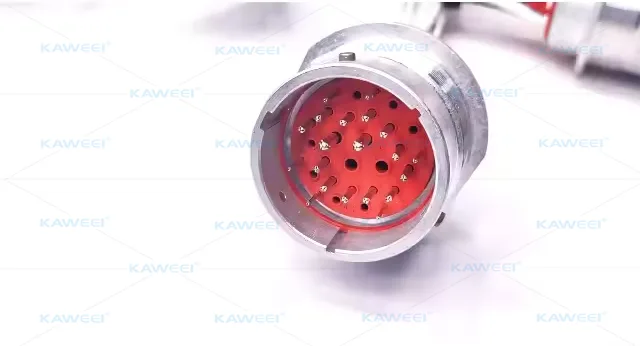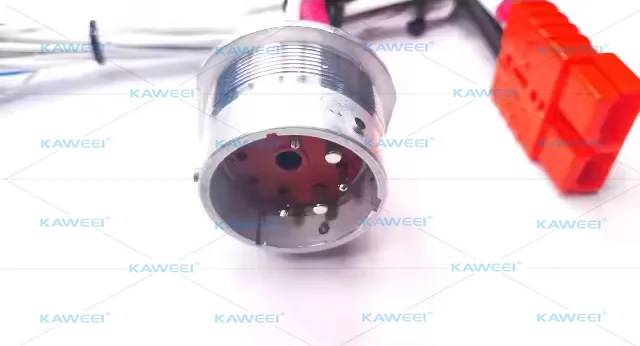Overview of Wiring Harness Manufacturing Proces
Harness Manufacturing Process Flow

- The manufacturing process of a harness primarily encompasses the following key steps:
- Material Preparation: Prepare various materials required for the harness, including wires, terminals, connectors, cable ties, wire markers, insulating tape, heat-shrink tubing, etc.
- Tooling and Equipment Setup: Prepare the necessary tools and equipment for production, such as crimping machines, heat-shrink machines, cutters, and various testing devices.
- Actual Production Process:
- Cutting and Stripping: Remove a specific length of the wire's insulation according to design requirements.
- Sleeving Wire Markers: Fit each wire with its corresponding identification number to facilitate subsequent assembly and maintenance.
- Terminal Crimping: Use professional equipment to securely connect terminals to wires.
- Connector Assembly: Ensure each connector accurately matches the corresponding terminals and wires.
- Routing and Bundling: Arrange and bundle the harness to ensure an organized and tidy structure.
- Rigorous Testing: Conduct electrical performance and connection reliability tests to ensure compliance with standards.
- Organization and Storage: Sort, package, and store qualified harnesses in designated areas.
Detailed Explanation of Key Processes

I. Terminal Crimping
The terminal is a critical component that connects wires to instruments and equipment, responsible for transmitting power and signals. The quality of terminal crimping directly affects the stability of equipment operation. A terminal mainly consists of three parts: the mating area, transition area, and crimping area. In actual production, the following crimping quality issues may occur:
- Abnormal Crimping Height: Crimping height is a key indicator of crimping quality.
- Too High: Fails to compress the wire core effectively, reducing contact area, increasing resistance, and causing overheating or even burnout.
- Too Low: Reduces the wire’s tensile strength and current-carrying capacity, potentially leading to broken wire cores or terminal cracking, resulting in an open circuit.
- Solution: Use professional tools such as micrometers for precise measurement and regularly calibrate crimping tools and equipment.
- Insulation Crimping Area Dimension Deviation: The insulation crimping area primarily provides stress relief for the conductor crimping area.
- Too Small: Sharply increases metal stress and weakens stress relief functionality.
- Too Large: Significantly reduces the stress buffering effect on the conductor crimping area.
- Solution: Perform visual inspection and gently shake the wire to ensure the insulation crimping area is secure without looseness.
- Loose Conductor Crimping Area: This is the most common cause of crimping failure. If the wire core is not fully enclosed within the crimping area, both connection strength and current-carrying capacity will be significantly reduced.
- Solution: Re-bundle the wire strands and reinsert them into the terminal for crimping. It is recommended to use dedicated wire strippers and control the stripping length to minimize wire strand loosening.
- Improper Wire Stripping Length:
- Too Short: The wire cannot be fully inserted into the conductor crimping area, resulting in insufficient tensile strength, easy detachment, reduced contact area, overheating, and open circuits.
- Solution: Strictly control the stripping length to ensure sufficient allowance.
- Excessive Wire Insertion Depth: Over-insertion of the wire, even into the transition area, may obstruct pin insertion, leading to poor contact or signal interruption. In severe cases, excessive wire length may cause short circuits between circuits.
- Solution: Strictly control the stripping length to avoid excessive exposure and precisely manage the wire insertion depth during crimping.

II. Connector Assembly
The following key points must be emphasized during connector assembly:
- Accurate Selection: Locomotive connectors come in a wide variety, with many appearing similar but having entirely different internal structures. Operators must select materials accurately based on shelf codes and cross-check them in detail with work instructions to ensure correct selection.
- Proper Insertion: When inserting terminals into the connector housing, apply appropriate force. A clear "click" sound indicates that the terminal is fully inserted, at which point force application should cease. Relying solely on visual judgment is a significant cause of quality issues.
- Effective Protection: Assembled connectors must be properly protected. Most connectors are used for signal and control wires, and dust and moisture in the production environment can easily invade, causing short circuits between lines and interfering with signal transmission. Use the protective covers provided with the connectors to tightly seal and secure the entire connector, ensuring assembly quality.


